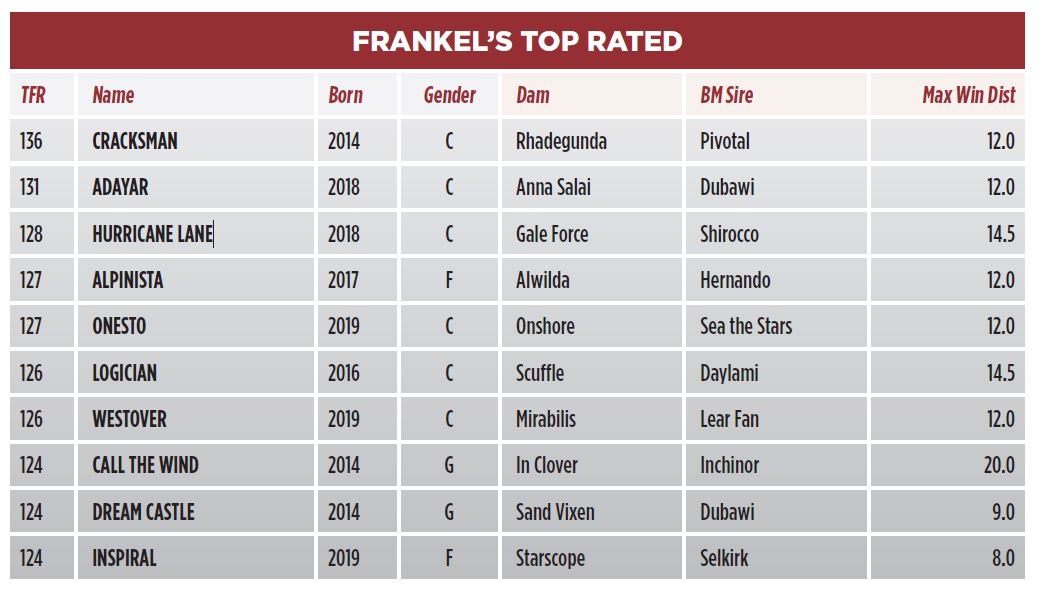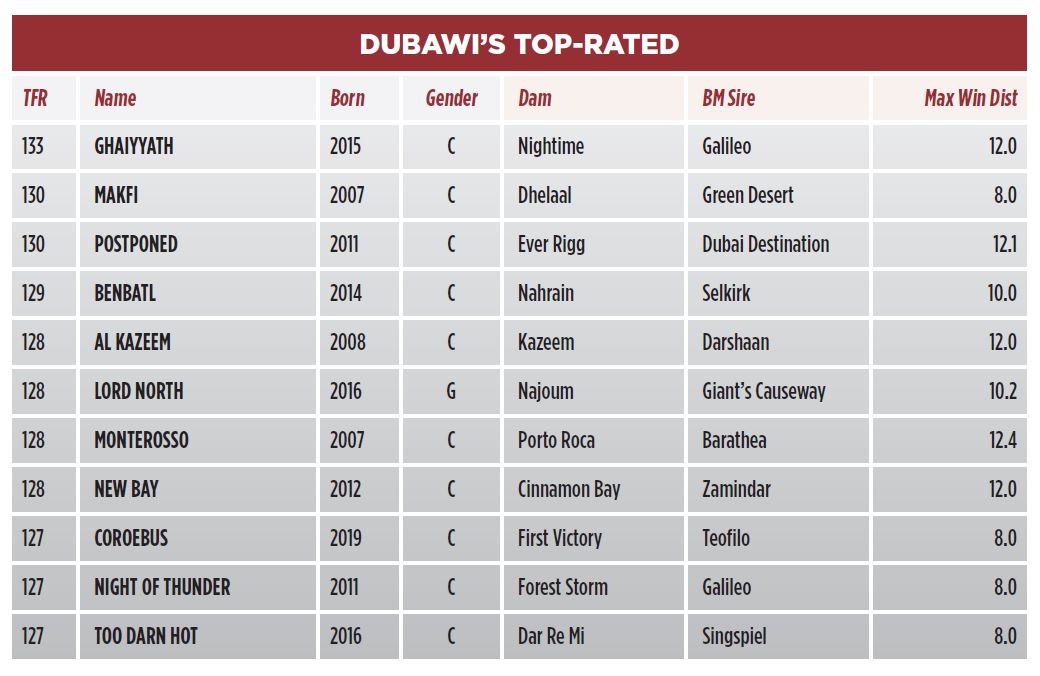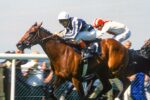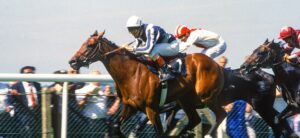We all know that stamina is valued much more than speed in Europe with prize-money for the big middle-distance races almost double that on offer for the Group 1 sprints. And when you add in the greater number of stallions chasing glory at the speed end of the spectrum, you quickly realise that our annual sires’ championship will only ever be won by a sire whose stock are suited to racing over middle distances.
I often wonder what the championship would look like if it was based on available earnings per runner at the various distance ranges. Nevertheless, our champion sires are worthy of their titles, particularly in recent years when it typically takes a broad body of excellent work to win the championship unlike in years gone by. In any case, top-class stallions are never one dimensional and discovering their strengths and weaknesses, or should I say strengths and greater strengths, is always fascinating. To this end, I though it worthwhile running the rule over our three most recent champion sires, Galileo, Frankel, and Dubawi, to understand their individual strengths and how they vary from one to another.
It is generally accepted that Galileo is the doyen of all sires, better even than his own great sire Sadler’s Wells.

Although both could get plenty of juvenile Group winners, Sadler’s Wells’s stakes-winner strike-rate of 6.6% from runners is lower than Galileo’s 7.2% and Galileo’s also featured a Group 1 winner, Clemmie, at six furlongs, a feat that eluded his sire. Frankel, meanwhile, with an average winning distance of 7.4 furlongs, sires two-year-olds with a bit more zip than his sire and grandsire whose juveniles have a higher stamina index of 7.6 furlongs. Frankel gets 5.1% stakes winners and 4.3% Group winners, both metrics behind Galileo’s 7.2% stakes winners and 5.5% Group winners. It’s also notable that Frankel has yet to sire a Group 1-winning two-year-olds at six furlongs or less.
That’s also true of Dubawi, but at least he has seven stakes-winning youngsters at sprint distances. The Dalham Hall Stud resident also has a higher strike-rate than Frankel among all his juveniles with 5.3% of his runners winning black-type races. But it took Dubawi until his eighth crop to sire his first Group 1-winning two-year-old when Wuheida landed the Prix Marcel Boussac. Since then, he’s added Wild Illusion, Too Darn Hot, Quorto, Modern Games and Albahr.
There was no such wait for Frankel’s first major two-year- old winner, his first crop featuring the Japanese Group 1 scorer Soul Stirring. Moreover, he’s already equalled Dubawi’s tally of six from seven fewer crops, with Inspiral and Chaldean (a first Group 1-winning colt on home soil) his most recent.
When it comes to three-year-olds, Galileo is still very much the king with 13% stakes winners, although he is in the club house now, and his strike-rate is very unlikely to improve from now on. Indeed, it may well fall and end up below Frankel’s 12.9% as the Juddmonte star is still in his prime.

Dubawi, meanwhile gets three-year-old stakes winners at a rate of 11.7%, but there is much more to explore here. You might have been encouraged to believe that Dubawi, with an average winning distance of 9.3 furlongs for his three- year-olds, would sire a good number of top-class middle-distance Classic types given the right mare. Well, that has not been the case, his only European three-year-old Group 1 winners over 12 furlongs and beyond being St Leger hero Eldar Eldarov, Grand Prix de Paris winner Erupt and German Derby victor Waldpark; none of these make Dubawi’s top ten racehorses based on Timeform ratings.
Frankel’s sophomores, meanwhile, and indeed his top racehorses of any age, are awash with stayers. No fewer than five of his top ten runners, based on Timeform ratings, winning Group 1s over 12 furlongs or more. They feature two St Leger winners in Logician (TF126) and Hurricane Lane (128, also an Irish Derby winner), Derby and King George hero Adayar (131), Irish Derby scorer Westover (126), plus Grand Prix de Paris hero Onesto (127).
For his part, Galileo has a higher percentage of Group 1-winning three-years-olds at a mile-and-a-half and beyond (9.3%) than either of the British pair and his top-class three-year-olds are too numerous to mention here. That Frankel is better equipped than Dubawi to supply top-class 12 furlong three-year- olds is a distinct advantage in any future champion sire battles they may fight out.

Where the Dubawi’s really shine are as older horses. There is no other sire out there whose stock display such improvement from three to four and beyond. Of the three under review, it is Dubawi’s 14.7% stakes winners to runners that outscores Galileo’s 13.6% and Frankel’s 10.4%. Moreover, to go from 11.7% among his three-year-olds to 14.7% for his older horses is remarkable, given that
Galileo can muster only muster a 0.6% improvement and Frankel’s strike-rate actually falls by 2.5%. No fewer than six of Dubawi’s best ten horses – Ghaiyyath (133), Postponed (130), Benbatl (129), plus Monterosso, Lord North and Al Kazeem, all rated 128 – did their best work beyond the age of three.
Typically, Dubawi’s stock contain more speedy types than the other two. He has 17 stakes winners at less than seven furlongs, headed by four Group 1 winners in Creative Force, the Kildangan Stud-based pair Space Blues and Naval Crown, plus Lucky Nine in Hong Kong. Group 1-winning sprinters have understandably been outside the scope of either Galileo or Frankel.
Another point of difference among the three is that Frankel is more likely to come up with top-class fillies. His stakes winners are split 48 to 50 among males and females, but the strike-rates are 14% to colts and geldings and 18.1% for his fillies and mares.
To summarise, the following metrics perfectly sum up the three champions. Seven per cent of the Group victories by Dubawi’s progeny have been in sprints; 34% by his milers; 35% by his 9-10.5-furlong horses; and 24% by his 12 furlong-plus runners. The corresponding breakdown for Frankel is: 4%, 34%, 31% and 31%, and for Galileo 1%, 27%, 32% and 40%.



